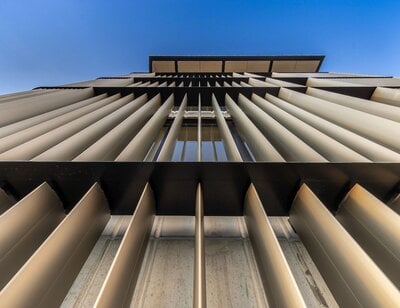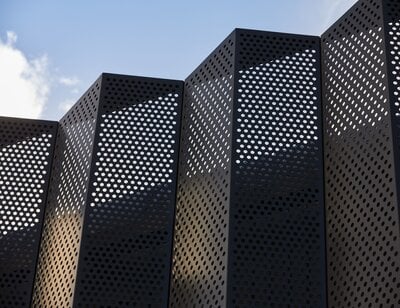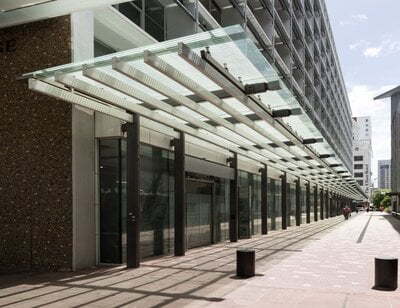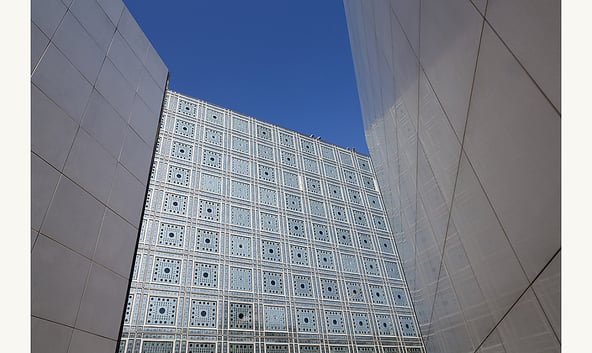 Image source: Institut du Monde Arabe
Image source: Institut du Monde Arabe
Getting the design of a kinetic façade right from the get go is paramount in creating a façade that will last and perform effectively. Without the appropriate considerations early on, you could be left with design issues and costly maintenance later on down the track. Take a look at the Institut du Monde Arabe in Paris which served as a lesson learned in the consequences of over-complicating a facade, and costly maintenance issues.
So because we want your designs to be more successful, this blog will discuss the key things you need to consider before and during the design of your kinetic façade.
Consider the surrounding climate
Any facade with moving parts is more susceptible to damage from the environment. Wind and other loads normally come back to pivot points that need to be engineered carefully to handle them. Thermal expansion and contraction due to temperature extremes can cause moving parts to jam or overload pivot points. Highly corrosive environments such as sea spray zones can lead to pivot points and mechanisms seizing up. Designers need to be aware of how the climate they're designing for can affect the performance and longevity of the kinetic façade, to ensure there are minimal issues and maintenance later on down the track.
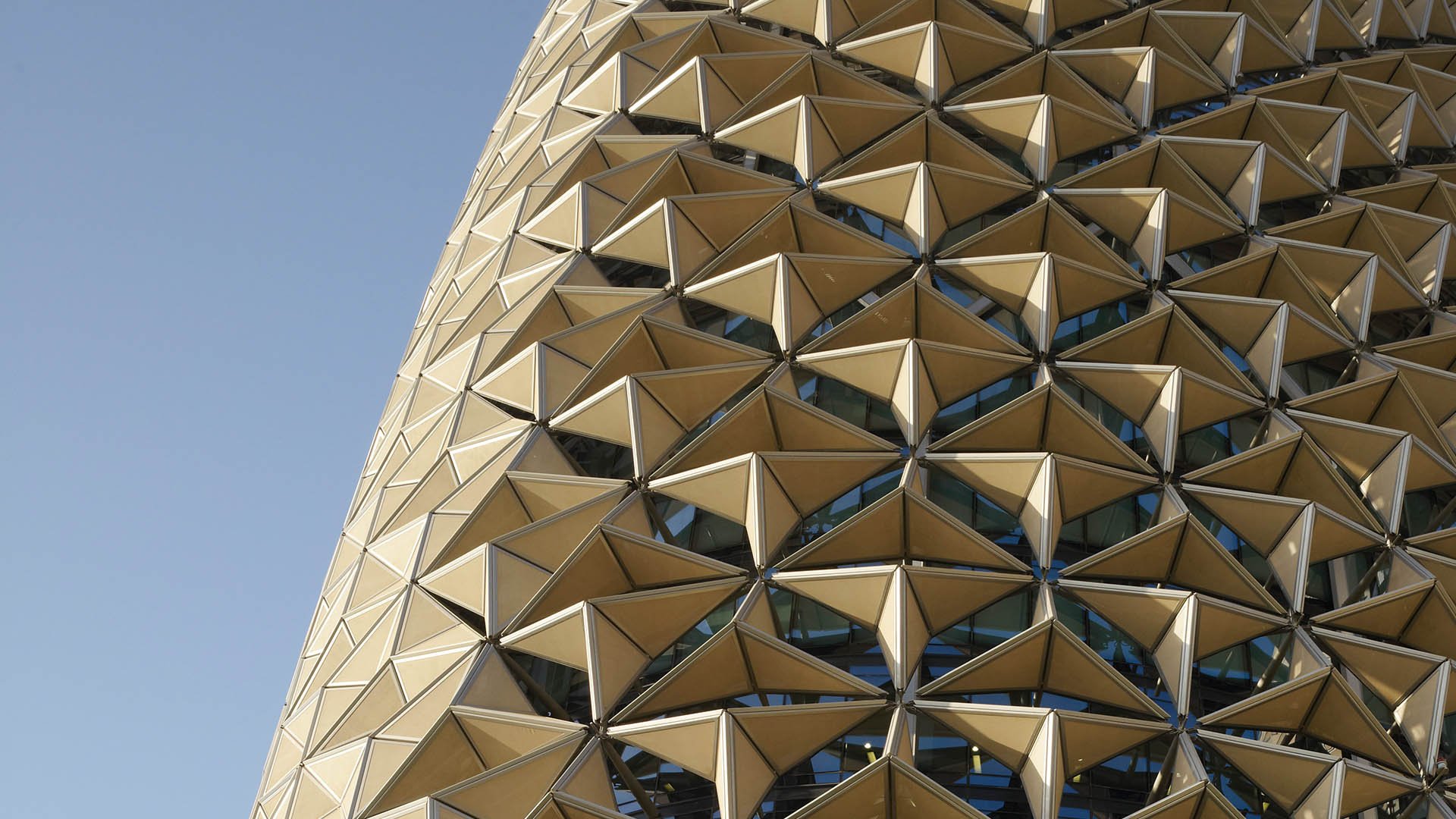
Al Bahr Towers - image source: AHR
Consider what will happen if the façade stops working
Let’s face it, no matter how good the planning of your façade is (just like your car) it can experience mechanical failure due to unforeseen circumstances from time to time. Or what if your façade needs to stop moving during maintenance? Do you have a back-up plan in place to ensure the building performance is still running as it should while the façade is out of action? For example, if your kinetic façade operates to reduce heat gain on a building, how will the building regulate the amount of heat it takes on if the façade is static for a while?
Back to the Institut; although it no longer operates as a moving facade, visitors will still comment on how beautiful it looks and wonder if it actually isn't working. This is an example of a great aesthetic design, working or not.
Consider how the facade will be maintained
On the topic of maintenance, it is important to consider how simple or complex it will be to maintain the moving parts of the façade. Can motors be replaced easily? How will maintenance personel access it safely? It seems so simple, but can be very easily overlooked and could lead to annoying and expensive issues later down the track.
It has been said that the main failure of the Institut can be attributed to maintenance, where there was more required maintenance than what could realistically be handled. This led the system to eventually stop working.
Consider the maintenance program
While we're talking maintenance; if the facade has complex components, make sure there is a proper preventative maintenance program in place. Don't bury the request in layers of specification where it will only be dug out once something goes wrong. Ask for a program and the cost for it from the contractors at tender time, rather than getting a maintenance manual at the end of the project and employing a separate maintenance contractor. You might find a much better result is achieved with this approach.
If you know all the maintenance that will be involved to keep the kinetic facade operating, you will be much better prepared to provide the appropriate resources to keep it moving.
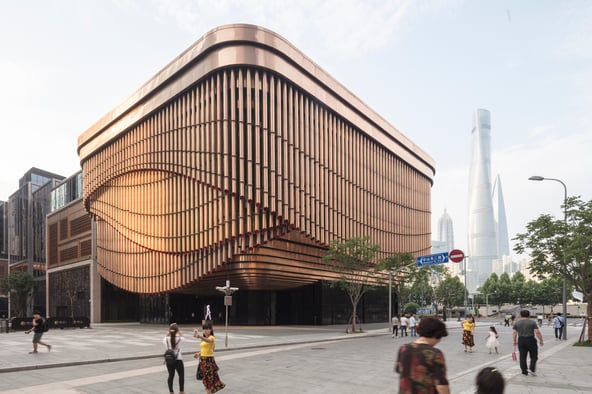
Bund Finance Centre in Shanghai - image source: ArchDaily
Consider how the control systems will work
There’s no point having a fancy looking kinetic façade that’s designed to improve thermal performance and energy use of a building if the control systems do not make all components work together seamlessly. Can the user override an automatic system or not? Whichever direction you take, be wary of unintended consequences. Some areas may overheat while others may be too cold.
Take a look at the Occidental Chemical Centre in Niagra Falls, which ended up overheating on the top levels and being too cool on the lower levels due to changes in the ventilation system.
Consider the adaptability of your design
The fact is that if you plan for your façade to last a long time, the function of the building may change during that time. It is also very costly to re-design and re-install a new façade which caters to a new function. So it is important to consider how your kinetic façade can adapt to the possible changing functions of the building it encases.
The more in-depth the design and risk analysis is for a kinetic façade in the early design stages, the more successful the façade performance will be in the long run. Charles D Linn states "the most important thing to maintain is the client's passion and commitment for keeping the building operating properly - that is, if it was designed right in the first place. If it wasn't, then the most important thing is the designer's commitment to making it operate properly. If you don't have these, all bets are off."
This is why it is important to consider who can help you develop a more complete design based on their areas of expertise – who can recommend the right materials for the climate and function? Who will be able to recommend a quality back up plan for if/when the façade function stops? Who can advise you on a suitable way to adapt the façade to changing functions?
It is important to do your research into suppliers and expertise that can manage the project brief, and help you deliver a quality kinetic façade that stands the test of time.

